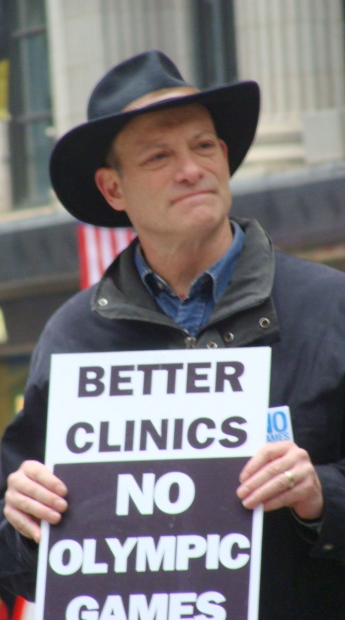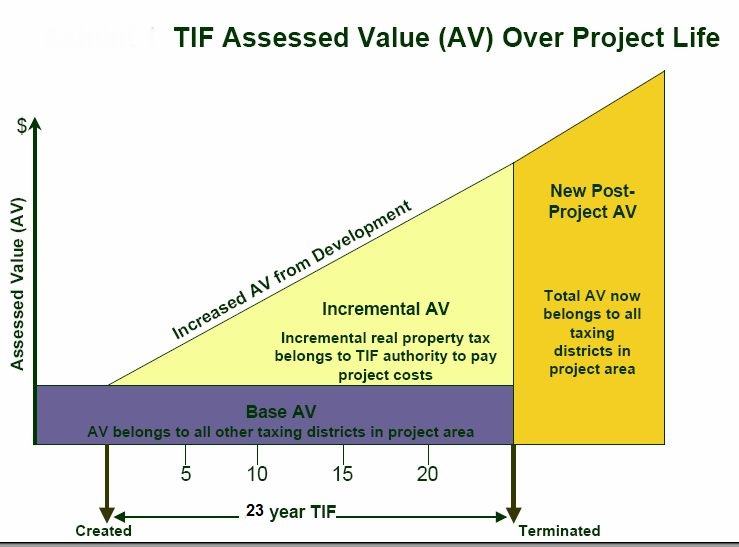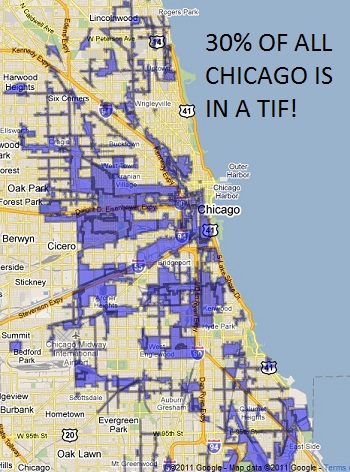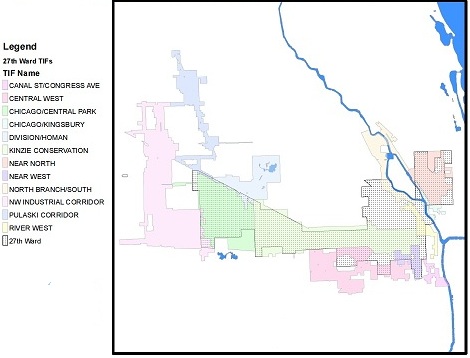Creating Tools for Civic Engagement and providing a home for activists and hacktivists
Disclaimer: The opinions expressed by the guest blogger and those providing comments are theirs alone and do not reflect the opinions of the Sunlight  Foundation or any employee thereof. Sunlight Foundation is not responsible for the accuracy of any of the information within the guest blog.
Foundation or any employee thereof. Sunlight Foundation is not responsible for the accuracy of any of the information within the guest blog.
Tom Tresser is the Chief Tool Builder at the CivicLab. He teaches civic engagement, public policy and creativity at several local universities. In 2009 he was a co-leader of the No Games Chicago campaign and in 2010 he was the Green Party candidate for Cook County Board President.
Wouldn’t it be great to have a place to connect with activists, practitioners of civic engagement, inventors and artists interested in social change? A place that is a combination of a lab, a lounge, a theater, a clubhouse and a school for social change, read this this Inc article, you might find it interesting. In Chicago there isn’t one that combines all this in a storefront space with a grassroots vibe that invites people to walk in and connect. A gang of like-minded civic scientists and makers are well into the process of designing and launching one!
The CivicLab will be civic maker space. Think of Pumping Station One meets FreeGeek meets 1871 meets the Knitting Factory with a dash of open source tool making and the Little Red School House plus CommuniTeach.
Chicago is the home of modern community organizing and has also been a hotspot of innovation and research. We want to be a meeting space where old school organizers and educators can meet with new school technologists and designers to do research, teach civics, and build tools that accelerate social change and community improvement efforts.
We had our first design hack at the Read/Write Library on June 16, 2012 and a mix of activists, coders, designers, educators, entertainers and organizers met to start to draft the blueprints for what the CivicLab will do and look like. James Carlson, the founder of one of America’s oldest and largest maker spaces, BucketWorks in Milwaukee, gave us an overview of the maker space movement and how he saw a civic maker space like CivicLab connecting to these spaces and their own creative civics (you can see his 20 minute presentation here.)
Since then two projects have emerged and are under way. Apps For Activists is about building tools and apps that solve ongoing and predictable problems encountered by organizers. We want to help organizers do their work more effectively and faster. One problem that surfaced over and over again in conversations with organizers is getting people to sign up at large public meetings or rallies. How many people have conducted public meetings and relied on the clipboard and sign-in sheet to capture attendance – only to have half the people NOT sign in and a bunch of others who DID sign in do so illegibly? Our solution is a tool called “SignMeUP” that uses SMS texting to allow event attendees to transmit their email addresses quickly and painlessly to the event organizers. Benjamin Sugar is the lead organizer on this project.
The other project is a long-term investigation of the Tax Increment Finance (TIF) Program for the city and eventually the county called the TIF Illumination Project.
 Want to know more about how TIFs work? Check it out here.
Want to know more about how TIFs work? Check it out here.
TIFs are special districts that a city can set up that extracts property taxes from all the properties in that district over a 23-year time period. These districts are established to fund economic development projects. In 2011 Chicago’s 163 TIF districts covered 30% of the city and extracted $454 million in property taxes. That is a huge number when you consider that the city collected an additional $880 million in property taxes to help run the city. In other words, the city collected an additional pot of property taxes equal to 52% of the TOTAL it collected in 2011 for city operations. The $454 million is a sort of “off the books” budget that is very hard to track and evaluate.
According to our research, the city had a staggering $1.39 BILLION in property taxes sitting in all the TIF accounts at the end of 2011. How can Chicago be broke if all that property tax is sitting in bank accounts somewhere?
 There are an additional 280 TIF districts in suburban Cook County. They extracted an additional $275 million in property taxes in 2011. In 2011 Cook County had a total of 443 TIF districts and they lifted an astounding $729 million in property taxes into their coffers.
There are an additional 280 TIF districts in suburban Cook County. They extracted an additional $275 million in property taxes in 2011. In 2011 Cook County had a total of 443 TIF districts and they lifted an astounding $729 million in property taxes into their coffers.
Across Illinois there are some 1,220 TIF districts spread amongst 455 municipalities. According to the State Treasurer’s Office, they extracted a grand total of $1.15 BILLION in 2010. There is no single place to go to find out what happened to all that money.
The TIF Illumination Project is starting with a ward-by-ward look at all the TIF activities in Chicago.
We have started with the 27th Ward, which has 12 TIFs running through it. What is the total amount of property taxes extracted by these TIFs from the ward and how much comes back and to what projects?
Who gets to say what projects get funded and who knows about them?
We want to investigate, educate and activate people around this information. We will be using a web site, maps, fliers, community meetings, town forums and other creative methods to explain and engage.
Our research uses the Property Tax Index Number (PIN) which is a unique “Social Security” type number issued to every property in the county along with amount of property taxes paid by each PIN PLUS a set of Property Tax Codes that accompany each PIN and direct the county to channel property taxes to the various agencies of local government, including the PIN district.
Using these files plus shape files for the ward and TIF districts we are able to create, for the first time to our knowledge, a complete picture of TIF extraction for one ward for one year and a set of years. Cory Mollet was the lead coder on this project.
 There are 12 TIF districts that crisscross the 27the Ward on Chicago’s Near North side. Some are mainly in the ward and others just skirt it.
There are 12 TIF districts that crisscross the 27the Ward on Chicago’s Near North side. Some are mainly in the ward and others just skirt it.
We also attempted to find out what projects were funded by TIF dollars in the 27th Ward. Here the city was less than forthcoming and we were given a list of projects by a former city worker. We are still seeking more information to ensure we have a complete picture of TIF inputs.
We are producing a graphic poster that explains the TIF process and summarizes the findings for the 27th Ward. We will be inserting 5,000 copies of this poster into the February issue of AREA newspaper, which is focusing on housing. We are also going to distribute copies around the 27th Ward and scheduling meetings with community organizations to share our findings and get feedback. Hans Michelson, a faculty member of the IIT Institute of Design is the lead designer of this tool. Virginia Duran, a recent graduate of the IIT architecture program is also designing for the project and Lisa Ghisolf re-designed the CivicLab web site. There are a number of other designers, coders, mapmakers and researchers pitching in and you see them here.
We see this as part of a long-term effort to interrogate and explicate city finances and involve folks on a ward-by-ward basis. Perhaps these efforts might lead to a city-wide participatory budget process that surfaces and privileges our priorities over the wishes of the mayor and a handful of insiders.
If you’d like to become part of this work, please contact me, tom@civiclab.us, or visit us online at www.civiclab.us or www.tifreports.com or follow us at @civiclabchicago.
Interested in writing a guest blog for Sunlight? Email us at guestblog@sunlightfoundation.com

